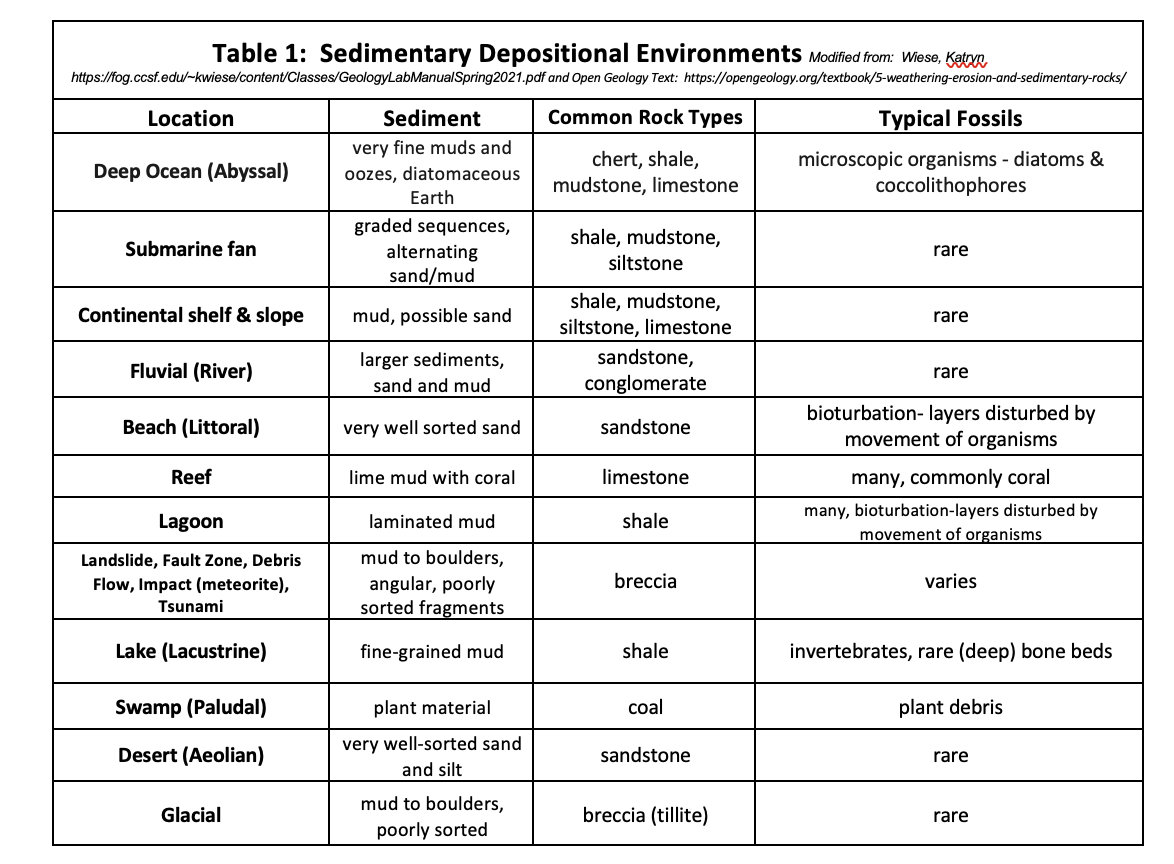Explain whether or not it is possible for two igneous rocks to be composed of the same minerals, but have entirely different names? Please provide an example to go along with your explanation.
- Explain whether or not it is possible for two igneous rocks to be composed of the same minerals, but have entirely different names? Please provide an example to go along with your explanation.
2. Granite is the most common igneous rock that is found in continental crust. Basalt is the most common igneous rock found in oceanic crust. How could you easily distinguish between these two rocks?
3. In terms of maturity, explain how you can determine the distance from the source the sediments in the rock traveled?
4. If you refer to Table 1: Sedimentary Depositional Environments notice that several of the same rocks appear in different rows, associated with different depositional environments. For example, the rock shale can be found in many different places – deep ocean, lakes, lagoons, continental shelf/slope, submarine fans. Explain how you could determine which of the possible environments the sample of shale actually formed?

Step by step
Solved in 3 steps









